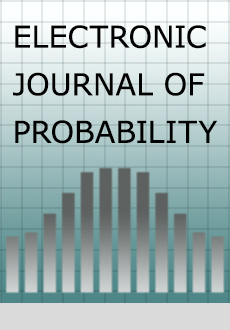Abstract
We study the asymptotic behavior as $t \to \infty $ of a time-dependent family $(\mu _{t})_{t \geq 0}$ of probability measures on $\mathbb {R}$ solving the kinetic-type evolution equation $\partial _{t} \mu _{t} + \mu _{t} = Q(\mu _{t})$ where $Q$ is a smoothing transformation on $\mathbb {R}$. This problem has been investigated earlier, e.g. by Bassetti and Ladelli [Ann. Appl. Probab. 22(5): 1928–1961, 2012] and Bogus, Buraczewski and Marynych [Stochastic Process. Appl. 130(2):677–693, 2020]. Combining the refined analysis of the latter paper, which provides a probabilistic description of the solution $\mu _{t}$ as the law of a suitable random sum related to a continuous-time branching random walk at time $t$, with recent advances in the analysis of the extremal positions in the branching random walk we are able to solve the case that has been left open until now. In the course of our work, we significantly weaken the assumptions in the literature that guarantee the existence (and uniqueness) of a solution to the evolution equation $\partial _{t} \mu _{t} + \mu _{t} = Q(\mu _{t})$.
Citation
Dariusz Buraczewski. Konrad Kolesko. Matthias Meiners. "Self-similar solutions to kinetic-type evolution equations: beyond the boundary case." Electron. J. Probab. 26 1 - 18, 2021. https://doi.org/10.1214/20-EJP568
Information





